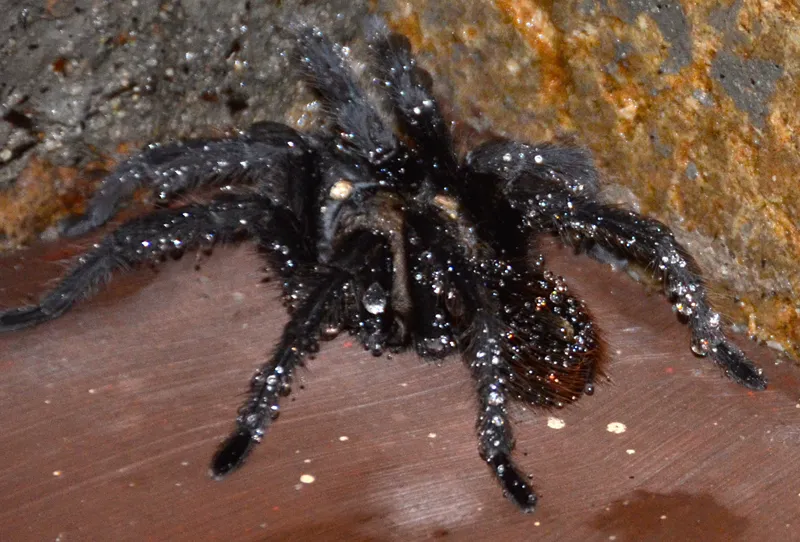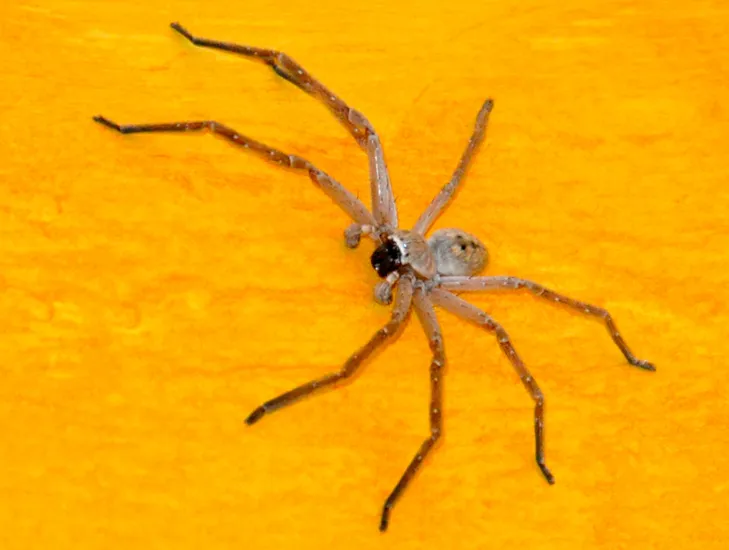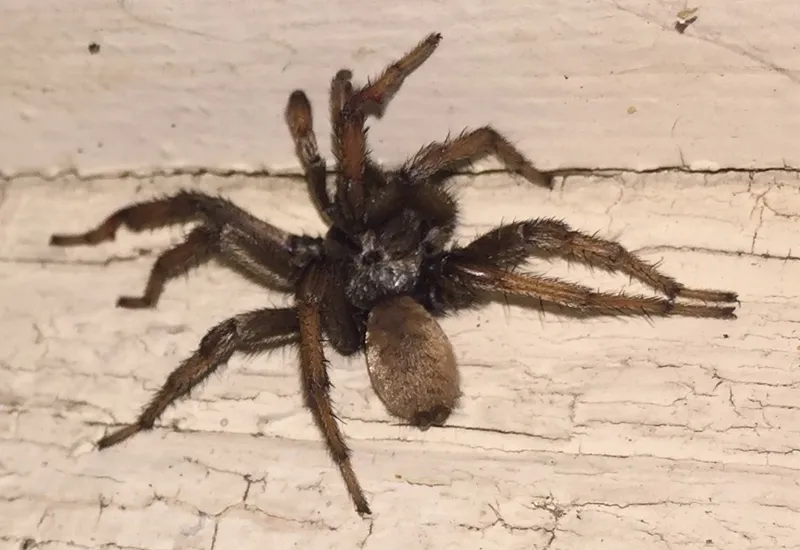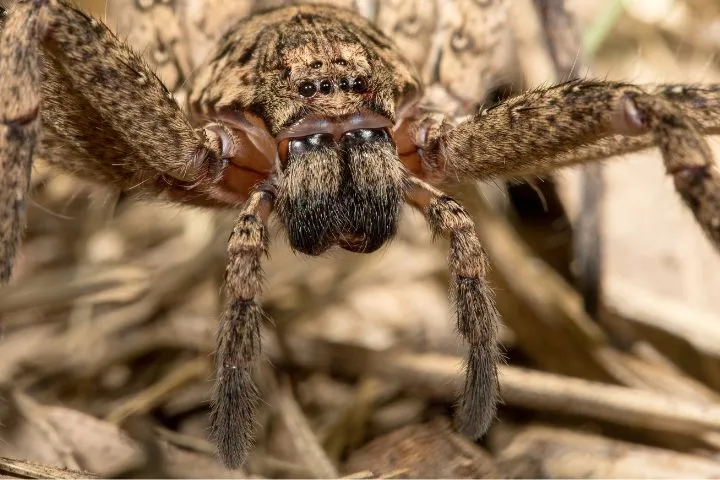Tarantula vs Huntsman Spider
The world of arachnids is filled with fascinating creatures, and two of the most intriguing are the tarantula and the huntsman spider. Both are large, formidable predators, but they possess distinct characteristics that set them apart. This article delves into a detailed comparison, examining their physical attributes, habitats, venom, hunting strategies, and ultimately, speculating on who would emerge victorious in a confrontation. Prepare to explore the remarkable world of these eight-legged wonders and discover the nuances of their survival tactics.
Size and Appearance
Tarantula Size and Appearance

Tarantulas are generally large, hairy spiders, often characterized by their robust bodies and thick legs. They come in a variety of colors, from earthy browns and blacks to vibrant blues and oranges, depending on the species. Body lengths can range from 1 to 4 inches, with leg spans reaching up to 12 inches or more in some species. Their bodies are divided into two main parts: the cephalothorax (fused head and thorax) and the abdomen. The cephalothorax houses the eyes, mouthparts (chelicerae with fangs), and legs, while the abdomen contains the internal organs. Tarantulas also have spinnerets at the end of their abdomen, which they use to produce silk for various purposes.
Huntsman Spider Size and Appearance
Huntsman spiders, also known as giant crab spiders, are known for their long legs and flat bodies, which allow them to squeeze into tight spaces. They typically range in size from 1 to 5 inches in body length, with leg spans that can exceed 12 inches. Their coloration is usually a mottled gray or brown, providing excellent camouflage against tree bark and other surfaces. Unlike tarantulas, huntsman spiders have a more flattened body shape, which contributes to their agility and ability to navigate narrow crevices. Their legs are positioned in a crab-like manner, giving them their distinctive appearance and allowing them to move sideways with great speed.
Habitat and Distribution
Tarantula Habitat and Distribution

Tarantulas are found in a wide range of habitats across the globe, primarily in tropical and subtropical regions. They are common in the Americas, Africa, Asia, and Australia. Their habitats vary depending on the species, including burrows in the ground, under rocks and logs, or in trees. Some species are terrestrial, while others are arboreal, meaning they live in trees. The specific environmental requirements of tarantulas, such as temperature and humidity, play a crucial role in their distribution and survival. They prefer warm and humid environments, which offer a conducive atmosphere for their growth and reproduction. Furthermore, they often choose areas with suitable prey and shelter to ensure their safety.
Huntsman Spider Habitat and Distribution
Huntsman spiders are primarily found in warmer regions, including Australia, Asia, Africa, and parts of the Americas. They are well-adapted to living in various habitats, such as forests, under tree bark, in rock crevices, and even inside human dwellings. Their flattened bodies and agility allow them to exploit diverse environments. Huntsman spiders are not known to construct webs to catch their prey. They are active hunters, and can often be found in houses, sheds, and other structures, where they hunt for insects and other small creatures. Their presence helps to keep the population of pests under control, making them beneficial inhabitants in many areas.
Venom and Bite
Tarantula Venom and Bite

Tarantulas possess venom that they use to subdue their prey. While the venom is typically not lethal to humans, it can cause localized pain, swelling, and muscle cramps. The severity of the reaction depends on the species of tarantula and the amount of venom injected. Some species have urticating hairs on their abdomen that they can flick at potential threats. These hairs can cause skin irritation and discomfort if they come into contact with skin or eyes. The primary use of the venom is for hunting and capturing their meals, such as insects, small rodents, and other invertebrates. Despite the potential for a bite, tarantulas are generally not aggressive and will only bite when they feel threatened.
Huntsman Spider Venom and Bite
Huntsman spiders also have venom, but it is not considered dangerous to humans. Their bite can be painful, causing localized pain, swelling, and redness. However, serious systemic reactions are rare. The venom primarily serves to immobilize their prey. The bite is not typically life-threatening, but the size and strength of the huntsman spider can make the experience quite unpleasant. They rarely bite unless provoked or threatened, and they usually prefer to flee rather than engage in a confrontation. Their venom is designed to quickly paralyze their prey, allowing them to consume it efficiently.
Hunting Strategies
Tarantula Hunting Strategies

Tarantulas are ambush predators, often waiting patiently for prey to come within striking distance. They typically hunt at night, relying on their keen senses to detect movement and vibrations. They use their fangs to inject venom into their prey, paralyzing it before consuming it. Their diet mainly consists of insects, but they also consume larger animals, such as small rodents, lizards, and birds, depending on their size and species. Some tarantulas actively pursue prey, while others remain in their burrows or webs, waiting for an unsuspecting meal to wander by. Their hunting strategies are finely tuned to maximize their chances of a successful hunt, allowing them to thrive in their environments.
Huntsman Spider Hunting Strategies
Huntsman spiders are active hunters that rely on their speed and agility to catch prey. They do not build webs, but rather hunt on the move, actively pursuing their targets. They can move at impressive speeds, both forward and sideways, to capture insects and other small invertebrates. Their flat bodies allow them to squeeze into tight spaces, which aids them in their hunts. Huntsman spiders typically hunt at night, taking advantage of the darkness to ambush their prey. Their excellent eyesight and quick reflexes make them highly effective predators. Their diet consists of a variety of insects, including cockroaches, crickets, and other pests, making them a valuable addition to any ecosystem.
Strength and Speed
Tarantula Strength and Speed

Tarantulas are strong spiders, capable of subduing prey much larger than themselves. Their powerful legs and chelicerae (jaws) give them a significant advantage in a fight. Although they are not particularly fast, their strength allows them to overcome and subdue their prey. They rely more on brute force and their venom to take down opponents. Their ability to lift and carry prey, sometimes several times their own weight, is a testament to their strength. While they are not known for their speed, they can move quickly when necessary, especially when defending themselves or pursuing prey. They are more reliant on power and stealth for their hunting.
Huntsman Spider Strength and Speed
Huntsman spiders are known for their incredible speed and agility. They can move rapidly across surfaces, both forward and sideways, making them formidable hunters. Their flattened bodies allow them to navigate tight spaces with ease, and their legs are adapted for quick bursts of movement. While they may not possess the raw strength of a tarantula, their speed and agility provide a significant advantage in capturing prey and evading predators. They are exceptionally quick, capable of covering considerable distances in short periods. Their speed is critical for their survival, enabling them to chase down prey and avoid dangerous situations. This combination of speed and agility makes them formidable competitors in their environment.
Who Would Win In a Fight?
Predicting the outcome of a fight between a tarantula and a huntsman spider is a difficult task, as it depends on several factors, including the size and species of each spider, the environment, and luck. Considering the characteristics discussed, a tarantula would likely have an advantage in a direct confrontation due to its size, strength, and potent venom. However, a huntsman spider’s speed and agility could allow it to evade the tarantula’s initial attacks and potentially inflict bites. In the end, it is a battle of strength versus speed, with the larger, more powerful spider, the tarantula, potentially holding the edge. However, the environment can significantly affect the fight. A confined space may favor the tarantula, while an open space may favor the huntsman spider. Ultimately, the outcome would be determined by a combination of these factors, and the battle would be a true test of survival of the fittest in the world of arachnids.
